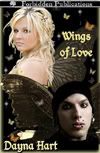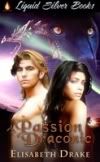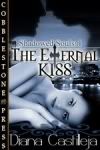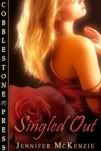Creating Effective Villains
Tuesday, November 21, 2006
 Crystal's post last week about villains made me think. I've read a lot of books crossing genre lines that have two-dimensional villains. They have no motivation whatsoever for their actions except for being "evil" or having some ridiculous vendetta against the hero/ine.
Crystal's post last week about villains made me think. I've read a lot of books crossing genre lines that have two-dimensional villains. They have no motivation whatsoever for their actions except for being "evil" or having some ridiculous vendetta against the hero/ine.In other words, they aren't an effective villain.
You don't need an effective villain to have a good book--after all, some of my favorite novels have two-dimensional villains--but it definitely strengthens the story. A fully fleshed out and realised villain can work against your hero/ine more actively and provide further plot twists you might not otherwise have thought of.
On the flipside, if you explore your villain enough, s/he becomes more "real," and it can be harder to see him as the "big baddie." I've had two books now where the character I intended to be the baddie turned out to be the hero instead. Since I found this out in prewriting, it wasn't a huge deal, but it could've been if I'd been pantsing.
But I think my work is all the stronger for those changes. In both cases, it's made the story much more complex and dynamic. I like that. ^_^
So what's the point of all this?
After some thought, I'm going to run a mini-workshop here on creating effective villains. It should be a three-part workshop, including exercises. If people want to post their completed exercises in comments, I'll be more than happy to give my commentary.
Check in next week for the first workshop!





2 Comments:
I'm trying to remember where it's posted, but there's a list of 'fantasy staples'...one of them being a badguy whose plan is to Destroy the World. For some reason it's never addressed how he'll escape the fiery inferno/explosion/flood/whatever.
Ditto those who want to Rule The World, especially when their premise seems to be that they hate the world. why rule it if you hate it? *sigh*
I like the workshop idea! Maybe we'll look into doing some more of these on weekends...
"Rule the world" only works when the villain has a reason for it. Yes, there are classic fantasy novels where the bad guy is the "ultimate force of evil," and that kind of works... because you're dealing with a force, not a human.
It makes less sense in humans. We have something to lose.
The best villains I've read have wanted to rule to help someone, prevent something from happening again... the problem is that while their motives are "good," the actions they take to get there are not.
Post a Comment
<< Home